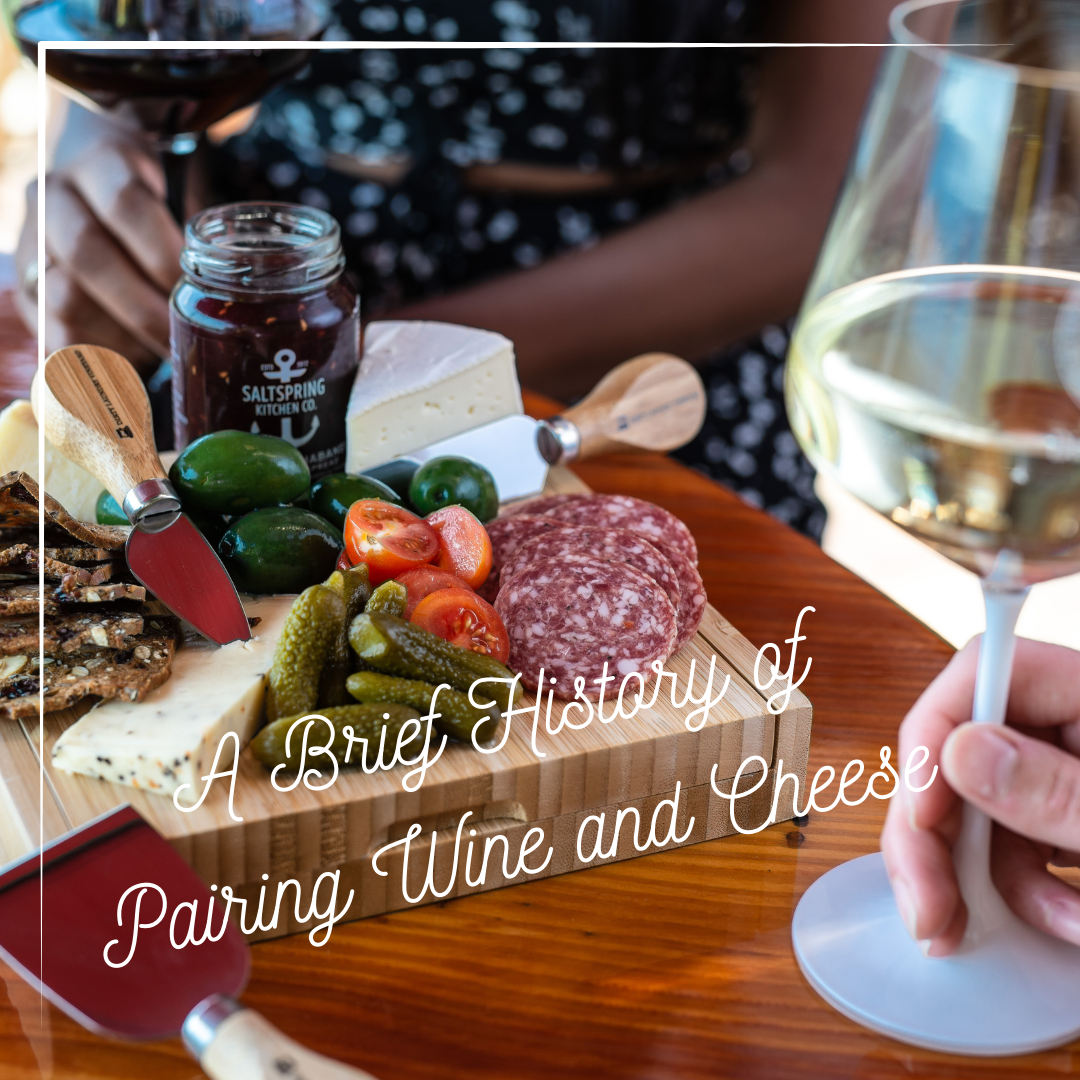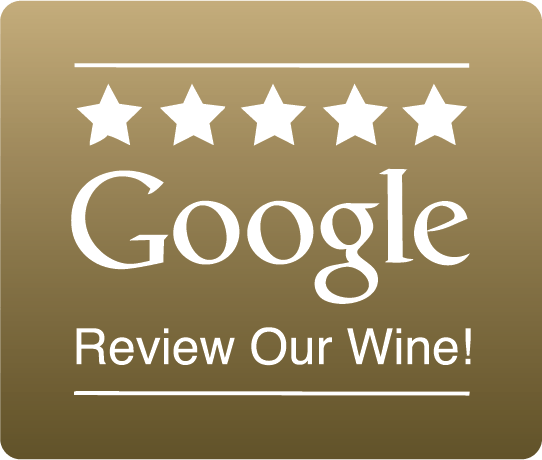A Brief History of Pairing Wine and Cheese (and how to do it properly!)

Wine and cheese is a culinary duo that has been celebrated for centuries and cherished for its harmonious marriage of flavours. Over the years cheese and wine combinations have become essential to social gatherings and fine dining experiences alike, and are even enjoyed by many as part of a cozy evening at home.
But how did the tradition of wine pairing with cheese come to be, and what is required to make the perfect cheese and wine combinations?
The history of pairing cheese and wine is, in fact, as rich and diverse as the flavours themselves. While the exact origins of this culinary tradition are difficult to pinpoint, the practice likely dates back centuries and has evolved over time through cultural influences and culinary experimentation.
Ancient Origins of Cheese and Wine Pairings
Both wine and cheese have ancient origins, with evidence of cheese-making dating back as far as 6000 BC. Both wine and cheese were staples of Mediterranean diets therefore it’s plausible that early civilizations discovered the natural pairing of cheese and wine through trial and error. However, the practice of intentionally pairing specific wines with particular cheeses likely developed much later.
The Role of Mediaeval Monasteries in Pairing Wine and Cheese
During the Middle Ages, monasteries played a significant role in the production of both cheese and wine. Monks cultivated vineyards and crafted wine, while also perfecting the art of cheese-making. With access to an abundance of both products, it's believed that monks were among the first to experiment with cheese and wine pairings. Their meticulous attention to detail and dedication to craftsmanship laid the groundwork for the sophisticated pairings we enjoy today.
The Renaissance Era (14th to 17th Century Approximately)
The Renaissance era saw a flourishing of culinary arts. The courts of Europe indulged in lavish feasts where wine flowed freely and cheese platters adorned the tables, and as trade routes expanded and exotic ingredients became more accessible, nobility and aristocrats began to experiment with new flavour combinations. As a result, wine and cheese pairings became a symbol of cultural sophistication, refinement and indulgence.
Modern Cheese and Wine Pairing Principles
In the modern era, the art of pairing wine and cheese has become more accessible to a wider audience, thanks in part to advancements in transportation and technology. Wine and cheese tastings, food and wine festivals, and culinary tourism have all contributed to the popularity of pairing, as well as the rise in popularity of the “charcuterie board” and its ability to offer a unique, customizable, and shareable dining experience that appeals to a wide range of tastes and preferences.
Regional Traditions
Wine and cheese pairings are celebrated worldwide, with each region offering its own unique combinations. For example, in France, the concept of terroir—how a particular region's climate, soil, and terrain influence the flavour of wine—led to the development of iconic pairings such as Brie with Champagne. The art of pairing wine and cheese has evolved into a science of sorts, influenced by global culinary trends, multicultural influences, and the creativity of chefs and food enthusiasts.
Pairing Wine and Cheese: The Guidelines
When it comes to cheese and wine combinations there are no hard and fast rules, however certain principles guide enthusiasts in creating harmonious pairings, and while classic pairings remain popular, there's also a growing appreciation for unconventional combinations that push the boundaries of traditional pairings. Ultimately, the best wine to drink with cheese should be one that complements the cheese and vice versa, balancing each other's flavours rather than overpowering one another.
In finding the perfect cheese and wine pairing, consider the following:
1. The Characteristics of the Cheese:
Start by considering the characteristics of the cheese to serve with wine. Is it soft and creamy, hard and nutty, or sharp and tangy? Understanding the cheese's texture, intensity, and flavour profile will help you choose the right wine to complement it.
2. Match Intensity:
Match the intensity of the wine with the intensity of the cheese. Lighter wines, such as white wines or light-bodied reds, pair well with delicate cheeses, while fuller-bodied wines, like robust reds, can stand up to stronger, aged cheeses.
3. Texture Pairing:
When it comes to the best wine to drink with cheese, think about the textures of both. Crisp, acidic wines pair well with creamy cheeses like Brie or Camembert as the acidity helps cut through the richness. Conversely, bold red wines with tannins pair nicely with hard, aged cheeses such as Parmesan or aged cheddar, as the tannins can soften the cheese's texture.
4. Consider Flavour Profiles:
Consider the flavour profiles of both when deciding on a wine that pairs with cheese. Look for complementary or contrasting flavours that can enhance the overall tasting experience. For example, a salty cheese can be balanced by a slightly sweet wine, while a tangy cheese can be complemented by a wine with citrus notes.
5. Balance is Key:
Ultimately, when it comes to the best cheese for wine, you want to aim for balance in your pairings. You want to choose a cheese to serve with wine that is complementary, with neither overpowering the other. Pay attention to how the flavours interact on your palate and adjust your pairings accordingly.
Classic Cheese and Wine Pairings
Now that we've covered the basics, let's explore some classic wine and cheese pairings that are sure to impress:
1.
Champagne or
Sparkling Wine
- Triple Cream Brie: The effervescence of Champagne cuts through the luxurious, creamy texture and delicate flavour that triple cream brie is known for, while the wine’s acidity cleanses the palate between bites creating a velvety mouthfeel. Triple cream brie has a mild, buttery flavour profile that allows the delicate nuances of the sparkling wine to shine through without overpowering them.
- Goat Cheese: The crisp acidity of Sauvignon Blanc complements the tanginess of goat cheese, creating a refreshing and palate-cleansing combination. Goat cheese infused with herbs such as thyme, rosemary, or basil adds an extra layer of complexity to its flavour profile, making it an excellent companion to the herbaceous notes often found in Sauvignon Blanc. Goat’s cheese also pairs nicely with a light, crisp rosé wine.
3.
Chardonnay
- Camembert: Camembert's creamy texture and velvety mouthfeel coats the palate with luscious richness that pairs beautifully with the buttery, oakiness of Chardonnay. Chardonnay typically has moderate acidity, which provides a refreshing counterpoint to the richness of Camembert, and helps cleanse the palate between bites, preventing the cheese from becoming overly heavy. The edible white rind of Camembert adds complexity to its flavour profile, with subtle mushroom and earthy notes that allow the nuances of Chardonnay to shine through without overpowering them
4. Pinot Noir
- Gruyère: Gruyère cheese has a distinct nutty, slightly sweet flavour profile that complements the fruity and earthy characteristics of Pinot Noir. In addition, Gruyère cheese has a firm texture that melts in the mouth, providing a satisfying contrast to the smooth and silky texture of Pinot Noir. The creamy consistency of the cheese adds richness to the pairing, enhancing the overall tasting experience.
- Aged Cheddar: Aged Cheddar boasts a bold and complex flavour profile with nutty, savoury, and sometimes slightly sweet notes. Its depth of flavour can stand up to the intense fruitiness and tannins of Cabernet Sauvignon, and it typically has a firm and crumbly texture which contrasts nicely with the smooth mouthfeel of Cabernet Sauvignon.
6. Merlot:
- Gouda: Gouda cheese has a smooth, creamy texture and a mild, slightly sweet caramel-like flavour with nutty undertones. This versatile flavour profile complements the soft tannins and fruit-forward, sometimes earthy, characteristics of Merlot without overpowering its nuances. Gouda's creamy texture melts on the palate, enhancing the mouthfeel of Merlot and creating a luxurious tasting experience.
7. Riesling
- Blue Cheese: Offering a bold and distinctive flavour profile with salty, tangy, and sometimes spicy notes, a creamy blue cheese that melts on the palate contrasts with the floral aromas and fruity sweetness of Riesling and can stand up to the vibrant acidity and sweetness levels of the wine. Blue cheese comes in various styles and intensities, allowing for a range of pairing options with different styles of Riesling, from dry to off-dry to sweet.
8. Port Wine
- Blue Cheese (Stilton in particular): Stilton is a rich and assertive blue cheese with bold flavours of blue mould, creating a complex and intense taste profile. Its sharp and tangy notes provide a satisfying contrast to the sweetness of Port wine, and the savoury and sweet undertones of the cheese complement the rich, fruity, and nutty flavours often found in Port wine.
Experiment and Enjoy
While these classic pairings are a great place to start, don't be afraid to experiment and discover your own favourite cheese and wine combinations. Taste is subjective, and what works well for one person may not be as appealing to another. Most importantly, have fun with the process! Pairing wine and cheese is as much about enjoying the experience as it is about finding the perfect match. The world of wine pairing with cheese is vast and diverse, offering endless opportunities for exploration and enjoyment. Cheers to delicious discoveries!

